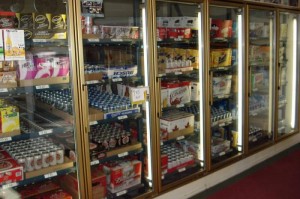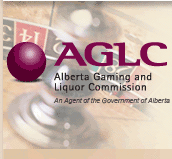
Yesterday, a sleepy Thursday afternoon in August, the Alberta government put out a press release announcing new changes to Alberta’s beer markup program, as reported by Canadian Beer News (here). They are yet to post the release on the government website. Clearly an indication they don’t want it to be widely known.
The shift is pretty straightforward. As of September 13, 2019 the full markup of $1.25/litre will kick in at 400,000 hectolitres (hL). Volumes smaller than this threshold will range between $0.10 to $0.80. The announcement is a bit fuzzy on details, but it looks like it is not graduated, meaning the 400,000 threshold is a cliff, where all of a brewery’s production is applied at the full rate.
The most recent markup policy set the threshold at 50,000 hL. It was the former government’s third iteration of beer policy, implemented after the need to scrap the Small Brewers’ Grant Program, which was challenged in court.
Before I proceed to my analysis, I need to offer some disclosure. I had a role in the design and implementation of the most recent, 50,000 hL, markup policy. Due to confidentiality rules I cannot speak in detail about that role, nor will I share any information that I learned from the process. Anything I discuss here (and going forward) will only include publicly available information, or information learned from industry sources in the course of my work as a beer writer. I will add that I will continue, to the best of my ability, to provide thoughtful, objective analysis of policy and what it means for the industry. I have never denied that I have biases, but I work hard to minimize the effect of those biases. That will remain true.
So, what does the new policy mean? I think there are three main impacts.
First, the big winner here is Big Rock. They were the big loser in the last policy, as they are the only Alberta brewery with production above 50,000 hL. (Minhas recently split their operations to make the Alberta brewery separate from the large Wisconsin operation). My instinct is that the new policy is specifically designed to alleviate the difficult cash crisis they were in over the past few months. Big Rock was quick to praise the new policy.
Second, the policy essentially returns Alberta to the pre-2015 regime, where small breweries from any location are eligible for the reduced markup. This makes Steam Whistle and Great Western (two breweries who sued over the previous policy) also winners in the change, along with other regional powerhouses like Phillips, Central City, and Pacific Western. This shift also leads to significant revenue losses for the government. I estimate somewhere between $14 and $20 million.
Allowing out-of-province breweries to benefit from a reduced markup is a controversial policy. Between 2011 and 2015, it caused quite a bit of blow back both from the Alberta industry and other commentators. The core question in the debate was whether Alberta taxpayers should subsidize breweries not located in the province (since the lower markup is essentially a subsidy).

The markup policy is only a problem because Alberta has the most open (the only open??) borders in the country. Other provinces protect their local breweries through a series of non-markup related protections. That problem persists despite the announcement.
The third effect is hard to evaluate at this point. The new threshold means that significant players in the market – Phillips, Steam Whistle, Great Western, etc. – regain their competitive advantage. They can use the lower markup to lower prices and take taps and shelf space. In the past this was a significant barrier to the growth of Alberta’s local beer industry, and a reason why the NDP policies tried to curtail the practice.
But times have changed. Before 2015 there were only a couple dozen breweries in Alberta, and the market was dominated by imports. Today there are over 100 Alberta breweries and bars and stores have been coming around to the notion that selling local is good for business.
Unlike five years ago, today being local creates its own competitive advantage. It is possible this counteracts the price advantage the large out-of-province players have. But it is too soon to know.
My take is that I have a provisional worry for small players who need the handful of taps they get in local establishments. I worry they will get pushed out. Big Rock will be fine. Alley Kat, Blindman and other well-established brands will likely be fine as well. But there are dozens upon dozens of newer breweries that are still scraping and crawling to make a place for themselves. Alberta’s is still a young industry.
I might be over-reacting. It could be that the local motivation has taken hold. But you will forgive me for not being so sure. Many outlets are still very price conscious. If you give Steam Whistle the same mark up as Village Brewing, who wins? I don’t know. But that is the dynamic the new policy has set out.
I will close with the observation that the new government has sided with the bigger players rather than support the new, small Alberta producers. Not entirely unexpected, but noteworthy in and of itself. They – the small brewers – may end up being fine. But this new policy has done them no favours.

August 23, 2019 at 12:13 PM
Minor typo in the 2nd to last paragraph: “Many outlets are still very price conscience.” should read “Many outlets are still very price conscious.”
August 23, 2019 at 12:16 PM
Nice catch. Thanks! I have made the correction.